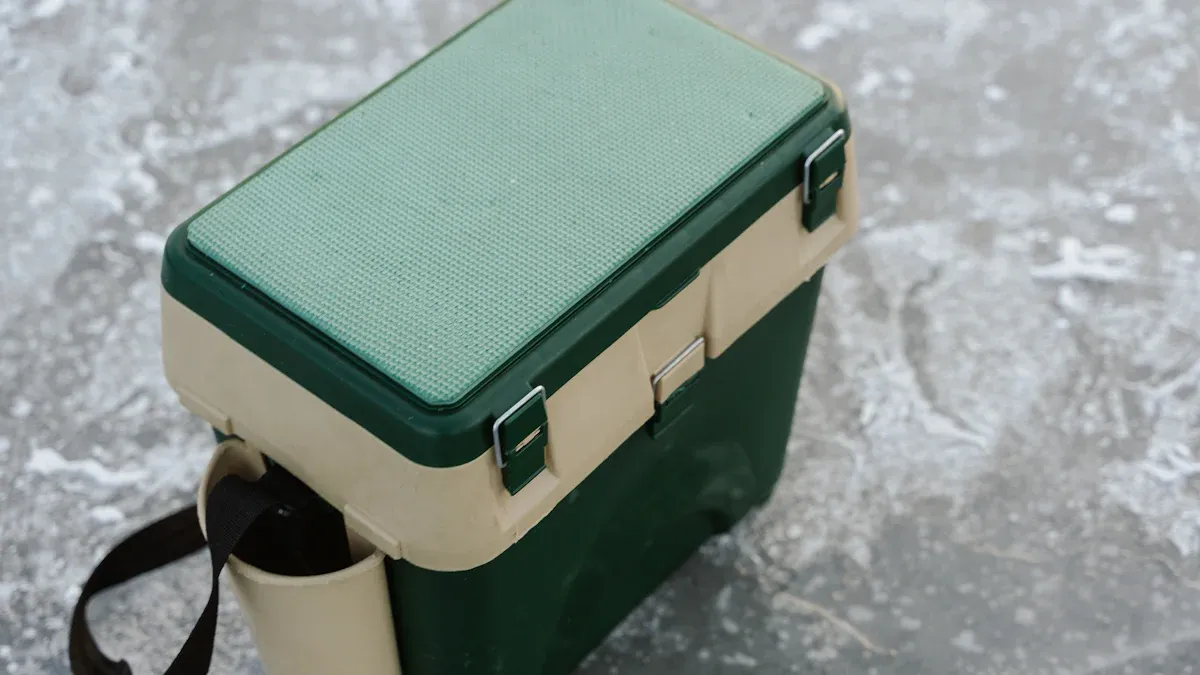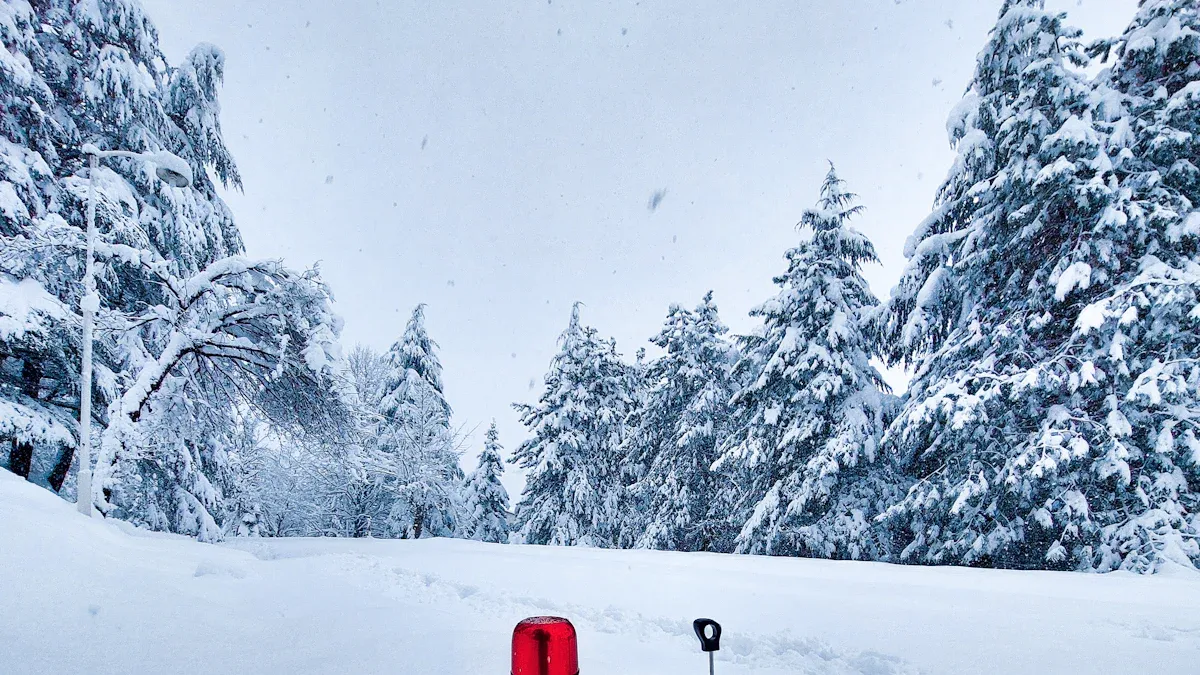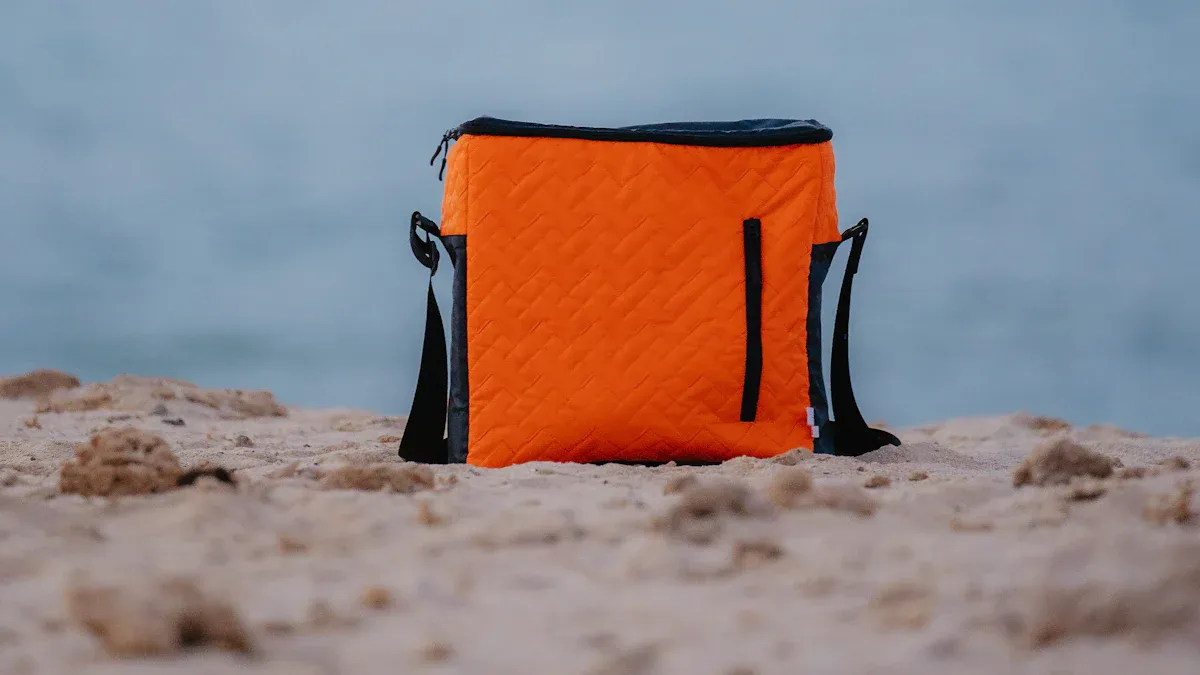
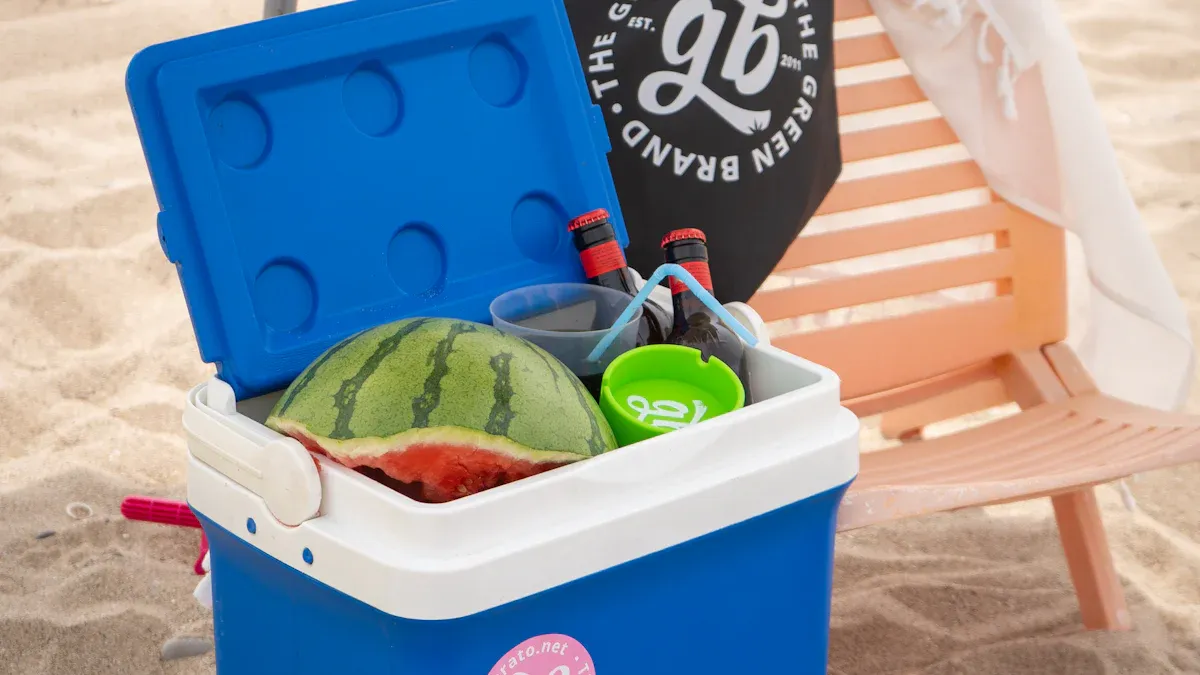
Keeping your food and drinks cold can feel tricky, but you can make it easy with the right steps. When you use an ice bag for cooler storage, you boost ice preservation and keep everything fresh. Pack your cooler tightly to slow down melting and improve efficiency. Ice works best when you reduce air gaps and keep the lid closed. Good preservation makes your outdoor trips more fun and stress-free.
Key Takeaways
- Pre-chill your cooler and food before packing to help ice last longer and keep everything colder.
- Use a 2:1 ratio of ice to food, layering block ice, ice bags, and ice packs around your items to maximize cooling.
- Fill all empty spaces in your cooler with ice packs or frozen bottles to reduce air gaps and slow ice melting.
- Keep your cooler closed and stored in the shade to prevent warm air from entering and ice from melting quickly.
- Check your ice levels regularly and add more ice or frozen bottles as needed to maintain cold temperatures throughout your trip.
Tips for Pre-Chilling Your Cooler and Contents
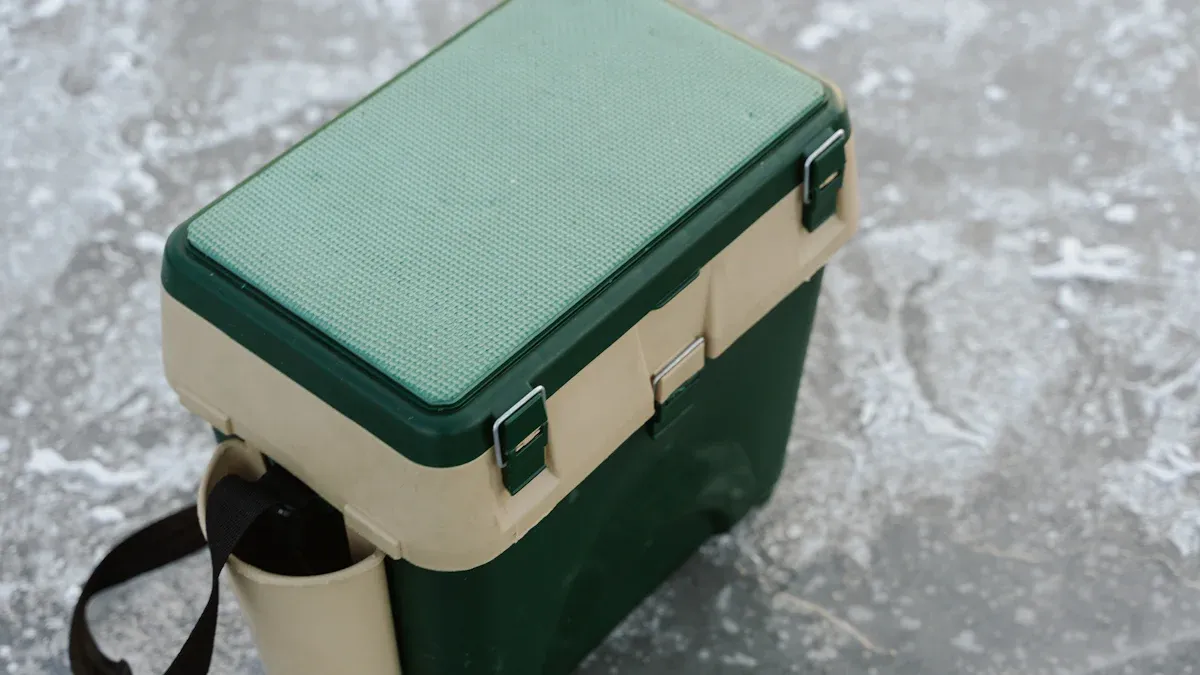
Pre-Chill the Cooler Before Packing
You want your cooler to work as hard as possible for you. One of the best tricks is to pre-chill your cooler before you start packing. If you skip this step, the ice has to cool down the inside of the cooler first, which makes it melt faster. When you pre-chill, you give your ice a head start and keep everything colder for longer.
- Fill your cooler with ice or frozen water bottles a few hours before you pack it.
- Store the cooler in a cool place with the lid open to let cold air flow inside.
- Even if you have a high-quality cooler, pre-chilling still helps you get better results.
Tip: If you freeze your own ice at home, you can save money and always have enough ice on hand for pre-chilling.
Pre-Chill Food and Drinks for Maximum Efficiency
When you prepare cooler contents in advance, you make your ice last longer. Cool food and drinks before packing them into the cooler. If you put warm or room-temperature items inside, they will melt the ice faster and raise the temperature inside the cooler.
- Always chill or freeze your food and drinks for several hours or overnight before packing.
- Avoid placing warm items in the cooler, even if you are in a hurry.
- Freeze water bottles to use as extra ice packs. They keep things cold and give you cold water to drink later.
- Using separate coolers for drinks and food can help you keep everything colder, especially if you open one more often than the other.
Packing cold items helps keep the overall temperature lower for a longer time. If you want your next picnic or camping trip to go smoothly, follow these tips and tricks to keep your cooler cold all day.
Choosing the Right Ice Bag for Cooler and Ice Packs
Types of Ice Packs: Reusable, Gel, Block, and KUER
You have a lot of choices when it comes to keeping things cold in your cooler. Each type of ice pack works a little differently. Here’s a quick look at how they compare:
| Ice Pack Type | Cooling Performance | Key Features | Typical Cooling Duration | Additional Notes |
|---|---|---|---|---|
| Gel Ice Packs | Extended cooling, flexible | Conforms to shapes, quick cooling | Moderate to long | Great for odd-shaped items or medical use |
| Reusable Ice Packs | Long-lasting, eco-friendly | Durable, reusable, less mess | 6 to 24 hours | Good for the environment, easy to use |
| Block Ice Packs | Long ice retention, rugged | Leak-proof, sweat-proof, quick freezing | 12 to 24 hours | Perfect for long trips, very sturdy |
| KUER Ice Packs | High-quality, advanced materials | Reinforced seams, durable, advanced gel | N/A | Designed for top performance and durability |
Some ice packs use special materials that freeze at lower temperatures. These can keep your food colder for longer. If you want the best results, use high-quality ice packs and frozen water bottles together.
Benefits of Using an Ice Bag for Cooler Efficiency
When you use an ice bag for cooler storage, you get better ice preservation and less mess. Ice in a bag or block absorbs more heat as it melts, which keeps your food cold longer. You also avoid water leaking all over your snacks. If you use block ice instead of cubed ice, you slow down melting and boost efficiency. Ice bags help you organize your cooler and keep everything dry. You can even combine ice packs and ice bags for the best results.
Tip: Pack your cooler with large blocks or bags of ice to keep things cold and dry for hours.
How Much Ice and Ice Packs to Pack a Cooler
You want to get the most out of your cooler. The best way is to follow a simple rule: pack two parts ice (including ice packs) for every one part food and drinks. This 2:1 ratio helps you keep things cold for as long as possible. Layer your ice packs and ice bag for cooler performance. If you need extra cold, add more frozen water bottles. This method gives you the best preservation and keeps your food safe.
How to Pack a Cooler for Maximum Efficiency
Layering Ice Packs, Ice Bags, and Food
When you want to maximize ice retention, the way you layer your items matters a lot. You should always start with a plan before you pack a cooler. Here’s a simple step-by-step guide to help you layer your items strategically and add layers to maximize cooling efficiency:
- Place a solid layer of block ice or frozen ice packs at the bottom of your cooler. This creates a cold foundation.
- Put the items you use least or those that need to stay the coldest, like raw meat or dairy, right on top of this bottom layer.
- Add a layer of cubed ice or an ice bag for cooler performance. This helps fill in spaces and keeps everything cold.
- Stack the items you reach for most often, like drinks or snacks, on the top layer.
- Surround your food and drinks with more ice packs or ice bags along the sides. This keeps cold air close to everything inside.
- Finish with another layer of ice packs or an ice sheet on top. This acts like a cold blanket and helps seal in the chill.
Tip: Always pre-chill your cooler and food before packing. Cold items help your ice last longer.
This method of cooler packing helps you get even cooling and keeps your food safe for longer trips.
Reducing Air Gaps for Better Cooling
Air gaps inside your cooler can ruin your cooling efficiency. When you leave empty spaces, warm air sneaks in and makes your ice melt faster. Water and ice absorb heat much better than air. If you pack your cooler full, you slow down the warming process and keep your food cold longer.
Try these tricks to reduce air gaps:
- Fill every space with ice packs, ice bags, or even frozen water bottles.
- Use smaller items or extra ice to fill in the corners and sides.
- If you notice empty spots after packing, add more ice or snacks to fill them up.
Note: Melted ice water inside the cooler actually helps keep things cold. Don’t rush to drain it unless you need to keep food dry.
When you pack your cooler full, you boost retention and make sure your ice lasts as long as possible.
Packing Order for Optimal Cold Retention
The order you pack your cooler can make a big difference in how long your food stays cold. Here’s a smart way to do it:
- Pre-chill your cooler for at least a few hours before you start.
- Chill all your food and drinks ahead of time.
- Use a 2:1 ratio of ice to food. This means you need twice as much ice as food and drinks.
- Start with a thick layer of ice or ice packs at the bottom.
- Place your coldest and least-used items, like meat or frozen meals, at the bottom.
- Add another layer of ice or an ice bag for cooler efficiency.
- Stack your more frequently used items, like sandwiches or drinks, on top.
- Fill any gaps with crushed ice or small ice packs.
- Top everything with an ice sheet or more ice packs for extra retention.
Remember: Cold air sinks, so keeping perishables at the bottom helps them stay colder.
If you follow this packing order, you will maximize ice retention and keep your food and drinks fresh for your whole adventure.
Optimal Placement of Ice Packs and Ice Bags in the Cooler
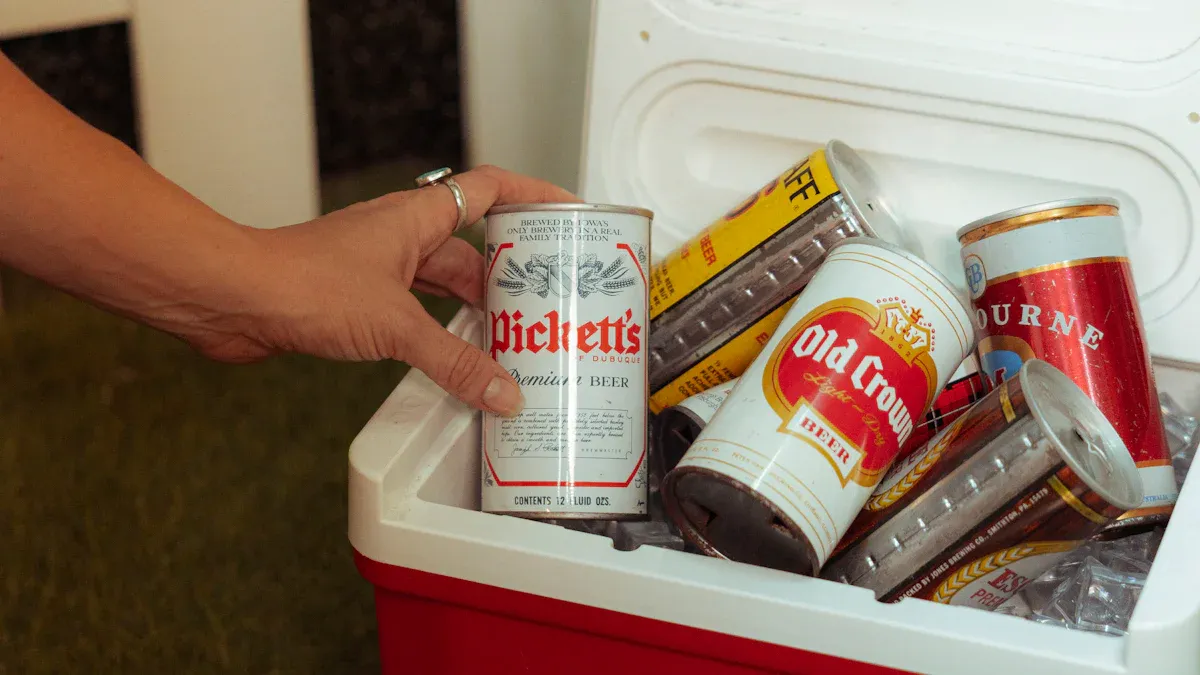
Base Layer for Ice Bag and Ice Packs
You might think putting a base layer of ice or ice packs at the bottom of your cooler is the best way to keep things cold. This method does help create a cold foundation and supports good retention. However, cold air sinks, so when you place all the ice at the bottom, it may not cool everything evenly. Some guides suggest putting heavier items at the bottom and ice on top to let cold air move down and around your food. If you use a base layer of ice, try adding more ice packs on the sides and top for better results. This way, you get a strong cold base and help cold air reach every corner.
Side and Top Placement for Even Cooling
For the best cooling, you want to surround your food and drinks with cold from every side. Placing ice packs or an ice bag for cooler use along the sides and on top of your items helps cold air flow all around. When you put gel ice packs on top, the cold moves down and covers everything. Adding ice to the sides creates a wall of cold, which keeps the temperature steady and prevents warm spots. This setup works even better if you pre-chill your cooler and use loose ice to fill gaps. You get even cooling and longer retention for your food and drinks.
Tip: Don’t stack all your ice packs in one spot. Spread them out for the best cooling power.
Surrounding Perishables with Ice Bags
You want your perishable foods to stay safe and fresh. Surrounding them with ice bags keeps the temperature low and stops bacteria from growing. Cold storage slows down spoilage and keeps your food tasting great. When you use ice bags on all sides, you protect your food from the “danger zone” where bacteria multiply fast. This method also helps keep vitamins and texture in your food. For the best results, use at least two cold sources—one above and one below your perishables. Make sure your cooler fits your needs, so you can arrange ice bags and ice packs all around your food for maximum retention and safety.
- Ice bags keep perishables fresh and safe.
- They help prevent foodborne illnesses.
- Proper placement extends shelf life and keeps food out of the danger zone.
Maintaining Cooler Efficiency During Use
Keep the Cooler Closed and Shaded
You want your food and drinks to stay cold as long as possible. One of the best ways to do this is to keep your cooler closed whenever you can. Every time you open the lid, warm air rushes in and cold air escapes. This makes your ice packs and ice bags melt faster. Try to plan ahead so you only open the cooler when you really need something.
Shade also plays a big role. If you leave your cooler in the sun, it heats up quickly. The ice inside melts much faster. Always look for a shady spot under a tree, picnic table, or even use a towel or tarp to cover your cooler. This simple step can double the life of your ice. You can even wrap your ice packs in towels to slow down melting.
Tip: Keep your cooler out of direct sunlight and cover it with a towel for extra protection. You will notice your ice lasts much longer.
Limit Opening Frequency for Better Efficiency
If you want to maximize the efficiency of your cooler, you need to limit how many times you open your cooler. Each time you lift the lid, warm air sneaks inside and starts melting the ice. Try to get everything you need in one go. Ask your friends or family what they want before you open the lid. This way, you keep the cold air inside and your food stays fresh.
- Make a list of what you need before opening the cooler.
- Group snacks and drinks together for easy grabbing.
- Remind everyone to close the lid tightly after each use.
Note: The less you open your cooler, the longer your ice packs and ice bags will last.
Store the Cooler in a Cool Area
Where you put your cooler matters a lot. If you leave it in a hot garage or out in the sun, the ice melts much faster. The cooler has to work harder to keep things cold. When you store your cooler in a cool area, like under a tree or inside a shaded tent, you help the ice last longer. Pre-chilling your cooler before you pack it also helps a lot. Some coolers can keep ice for up to 82 hours if you pre-chill and store them in a cool place.
- Keep your cooler away from heat sources like grills or cars.
- Look for the coolest spot at your campsite or picnic area.
- If you can, place your cooler on grass or dirt instead of hot pavement.
Keeping your cooler in a cool, shaded area can double the life of your ice packs and ice bags. You get more time to enjoy your food and drinks without worrying about spoilage.
Monitor and Replenish Ice Bag for Cooler Performance
Checking Ice and Ice Pack Levels
You want your food and drinks to stay cold, so it’s important to keep an eye on your ice and ice packs. Don’t just pack your cooler and forget about it. Make it a habit to check the ice level every few hours, especially if you’re out for a long day or a multi-day trip. If you notice the ice melting quickly, take action before things warm up.
Here’s a simple way to monitor your ice supply:
- Open your cooler as little as possible to keep the cold air inside.
- Peek inside to see if the ice is still solid or if it’s turning to water.
- Feel around the ice packs—if they’re soft, it’s time to swap them out.
- Look for empty spaces. Fill them with extra ice packs or frozen water bottles to keep everything packed tight.
- Don’t rush to drain melted ice water. That cold water actually helps keep the rest of your ice colder for longer.
Tip: Cold water from melted ice can help keep your food chilled, so only drain it if you need to keep things dry.
Adding More Ice or Ice Packs as Needed
You don’t need to follow a strict schedule for adding ice. Instead, add more when you see the ice running low or when the temperature inside the cooler starts to rise. For longer trips, keep extra ice or frozen water bottles nearby so you can top up your cooler when needed.
- Freeze water bottles ahead of time. They last longer than regular cubed ice and double as cold drinks later.
- Layer new ice or ice packs between your food and drinks for even cooling.
- Stick to a 2:1 ratio of ice to food for the best results.
- Don’t overpack with ice, but make sure there’s enough to fill gaps and keep everything cold.
- If you’re using your cooler for several days, plan to replenish your ice supply each morning or evening.
Remember: The key is to watch your ice and add more as needed, not just by the clock. This way, your food and drinks stay safe and cold the whole time.
Practical Tips for Using Ice Bag for Cooler
Keeping Food Dry and Fresh
You want your food to stay dry and fresh during your trip. Here are some easy tricks you can use for better ice preservation and food safety:
- Line the inside of your cooler with aluminum foil or thermal bubble wrap. This helps reflect heat and keeps cold air inside.
- Use large ice blocks instead of small cubes. Big blocks melt slower and help with preservation.
- Wrap fresh produce in paper or cardboard. This protects it from freezing or getting soggy.
- Pack your cooler tightly. Fill any gaps with frozen items or extra ice packs to slow down melting.
- Organize your cooler so you open the lid less often. This keeps the cold air in and helps with ice preservation.
- Don’t drain the water unless you need to keep things dry. Cold water helps keep everything chilled.
Tip: Pre-chill your cooler and all your food before packing. This simple step makes a big difference in how long your food stays fresh.
Managing Meltwater and Drainage
Meltwater can be both a friend and a problem. If you want to keep food dry, use sealed containers or bags. Place items that must stay dry on top of the ice or in waterproof bags. Remove melted water only if it starts to cover your food or if you want to avoid soggy snacks. Remember, don’t drain the water too soon. That cold water actually helps with preservation and keeps your cooler cold longer.
Cleaning and Reusing Ice Bags
You can reuse ice bags to save money and help the environment. Always wash your ice bags with warm, soapy water after each use. Rinse them well and let them dry completely before freezing again. Never reuse ice from raw foods on cooked foods. Check your bags for any damage before refilling. Reusable ice bags last for years and reduce plastic waste, making them a smart choice for ice preservation and sustainability.
Quick Checklist for Ice Pack Efficiency in Your Cooler
Step-by-Step Actions for Packing and Maintenance
Ready to keep your food and drinks cold for as long as possible? Here’s a simple checklist you can follow every time you pack your cooler. These steps help you get the most out of your ice packs and ice bags, so you can enjoy fresh snacks and cold drinks all day.
- Pre-chill your cooler, food, and drinks before you start packing. Cold items help your ice last longer.
- Use airtight containers or sealable bags for your food. This keeps everything dry and safe from leaks.
- Place a layer of block ice or frozen water bottles at the bottom of the cooler. This creates a strong cold base.
- Pack food in reverse order of use. Put last-day meals at the bottom and first-day snacks on top.
- Fill empty spaces with extra ice packs, crushed ice, or small drinks. No air gaps means better cooling.
- Layer ice packs or ice bags between food items. This keeps cold air close to everything inside.
- Keep wet and dry items separate by using waterproof bags or containers.
- Top off your cooler with reusable freezer sheets or a damp towel. This traps cold air and blocks heat.
- Store your cooler in the shade or cover it with a towel if you can’t find shade. This step can double your ice life.
- Limit how often you open the cooler. Grab what you need quickly and close the lid tight.
- Check ice and ice pack levels every few hours. Add more ice if you see it melting fast.
- Drain melted ice water only if it starts to cover your food. Cold water helps keep things chilled.
- Clean your cooler after each trip. This keeps it working well and ready for next time.
Tip: Use two coolers if you have lots of drinks and food. This way, you open each one less often and keep everything colder.
You can keep your cooler cold for hours by following a few simple steps. Pre-chill your cooler, pack everything tightly, and use the right ice packs and ice bag for better ice preservation. Studies show that these actions help slow ice melt and keep food safe. When you fill all gaps and store your cooler in the shade, you boost preservation and enjoy fresh snacks longer. Try these tips on your next trip and see the difference for yourself!
FAQ
How long do ice packs and ice bags keep a cooler cold?
Most ice packs and ice bags keep your cooler cold for 12 to 24 hours. If you pre-chill everything and keep the cooler closed, you can stretch that time. Bigger blocks of ice last longer than small cubes.
Can I use regular ice and ice packs together?
Yes, you can! Mixing regular ice with ice packs gives you better cooling. Ice packs help keep things dry, while regular ice fills gaps and cools fast. You get the best of both worlds.
How do I keep my food from getting soggy in the cooler?
Put your food in airtight containers or sealable bags. Place ice packs or ice bags under and around the containers. This keeps water away from your food and helps everything stay fresh.
What is the best way to clean reusable ice bags?
Wash your ice bags with warm, soapy water after each use. Rinse them well and let them dry completely before freezing again. Always check for leaks or damage before you reuse them.

